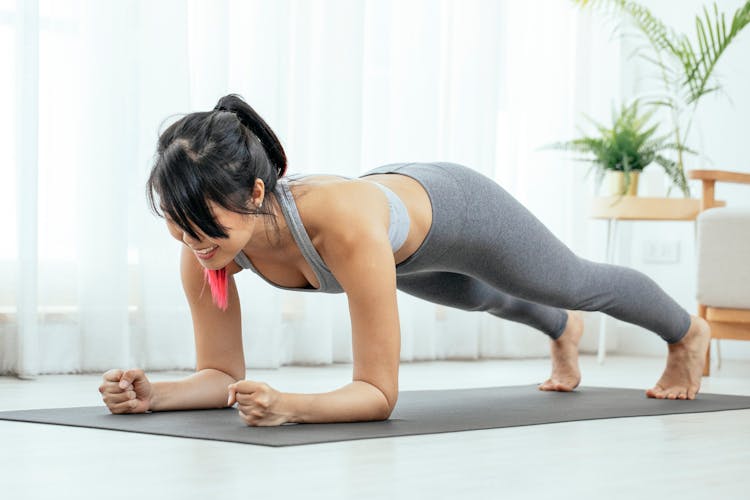
The Rise of Fitness Influencers: Shaping the Modern Fitness Landscape
The fitness industry has undergone a dramatic transformation in the last couple of years, largely due to the rise of fitness influencers on social media. These individuals are posting on various social media platforms to inspire and change how we approach health, exercise, and wellness. These influencers have built loyal online communities, launched successful business ventures, and are now at the forefront of a new era in fitness. Let’s figure out this phenomenon together as we go through the article and explore the rise of fitness influencers.
Table of Contents
The Social Media Fitness Revolution
In the early 2000s, fitness enthusiasts majorly relied on traditional media like magazines and television for exercise advice and tutorials. Fast forward to the current times, and social media has transformed the landscape, creating a new breed of fitness experts, famously called the “fitness influencers”. These influencers are reaching a massive audience worldwide with the help of social media platforms like TikTok, Instagram, YouTube, and Facebook instantly.
Social media’s snappy visuals and interactive nature have made it an ideal platform for fitness influencers to showcase workout routines, share nutrition tips, and motivate their followers. Instagram’s photo and video capabilities, TikTok’s short-form videos, and YouTube’s long-form content all cater to different aspects of fitness education and engagement. This democratization of fitness content means that anyone with a smartphone and a passion for fitness can potentially reach millions of people, breaking down the barriers once held by traditional media.
Building Communities
One of the most significant impacts of fitness influencers is their ability to build communities with their followers. Unlike traditional fitness programs that might be limited to local gyms or fitness centers, social media lets influencers reach audiences worldwide which enables them to create global communities united by a like-minded passion for fitness and wellness.
Influencers foster these communities by engaging directly with their followers through comments, stories, live sessions, and Q&A segments. They create a sense of belonging and support by encouraging followers to share their fitness journeys, celebrate achievements, and offer advice. Hashtags, challenges, and community-driven campaigns also play a crucial role in strengthening these connections. For instance, fitness challenges like the “30-Day Plank Challenge” can quickly gain traction and unite thousands of participants worldwide, all striving towards a common goal.
Monetization and Business Ventures
As the influence of fitness influencers has grown, so too has their potential for monetization. Many fitness influencers have turned their online presence into lucrative business ventures. Here’s a closer look at some of the ways they do it:
1. Sponsored Content and Brand Partnerships
Fitness influencers often collaborate with brands to promote products or services. These partnerships can include sponsored posts, product reviews, or brand ambassadorships. Brands in the fitness industry, from supplement companies to apparel brands, look for influencers with high engagement to widen their reach and tap into their audience. If you’re aspiring to be a fitness influencer but are struggling to attract the desired amount of engagement, then you can consider buying reliable and authentic engagement from Stormlikes for your post. Don’t believe us? Check out the reviews of Stormlikes.com yourself to clear all the doubts in your mind.
2. Merchandise and Apparel Lines
Many fitness influencers have launched their own lines of merchandise or fitness apparel. This not only provides a revenue stream but also helps influencers solidify their brand identity. Popular examples include fitness apparel brands started by influencers like Gymshark or the successful merchandise lines of influencers like Kayla Itsines or Sam Sulek.
3. Online Training Programs and Courses
Fitness influencers often create and sell online training programs, workout plans, and nutrition guides. These digital products can range from personalized coaching sessions to comprehensive fitness programs, offering followers structured guidance on their fitness journeys.
4. Affiliate Marketing
Influencers frequently use affiliate marketing to earn commissions by promoting products through unique affiliate links. When their followers make purchases through these links, influencers receive a percentage of the sale.
Authenticity and Reliability
Truth be told, the internet today is saturated with fitness advice, thus authenticity and reliability are critical factors that can make or break an influencer’s credibility. Followers increasingly seek genuine, trustworthy sources of information and are quick to spot inauthenticity.
Authentic fitness influencers often share their personal fitness journeys, including both successes and struggles. They provide relatable content, avoiding overly edited or unrealistic portrayals of fitness. This transparency helps build trust and encourages followers to engage more deeply with the influencer’s content.
However, with the rise of fitness influencers, there’s also been an increase in misinformation. Some influencers may promote products or routines without scientific backing or may exaggerate their qualifications to seek an extra set of eyes. This can lead to skepticism among followers and potential harm if advice is not properly vetted.
Diverse Fitness Perspectives
Fitness influencers bring a wide array of perspectives to the table, reflecting diverse approaches to health and wellness. This diversity is a significant advantage, as it allows for a more inclusive and comprehensive view of fitness.
Cultural Diversity
Influencers from different cultural backgrounds bring unique fitness traditions and practices. For instance, influencers may share insights into how yoga practices from India help in improved agility and flexibility, unique strength training and conditioning derived from martial arts from East Asia, or special diet practices from various regions.
Inclusive Fitness
Some influencers focus on inclusivity, addressing fitness from a body-positive perspective or catering to specific needs, such as fitness for people with disabilities or with certain health conditions. This approach helps broaden the appeal of fitness and makes it more accessible to a wider audience.
Varied Fitness Disciplines
Fitness influencers often specialize in different disciplines, such as weightlifting, calisthenics, CrossFit, running, yoga, or pilates. This variety allows followers to explore various fitness routines and find what works best for them.
Challenges and Criticism
Despite their success, fitness influencers face several challenges and criticisms as well. Addressing these issues is crucial for maintaining credibility and fostering a positive impact on the fitness community.
Unrealistic Expectations
Social media can sometimes present an idealized version of fitness that is not achievable for everyone. Influencers might unintentionally set unrealistic standards for body image or performance, leading to pressure and dissatisfaction among followers.
Product Promotion vs. Authenticity
Balancing authenticity with promotional content can be tricky. Followers may question the sincerity of an influencer’s recommendations if they are perceived as overly commercialized or if the influencer’s primary motivation seems to be financial gain.
Misinformation
As mentioned earlier, the spread of misinformation is a significant concern. Followers must navigate through a sea of content to find reliable and scientifically sound advice.
Burnout
The constant need to produce content, engage with followers, and maintain a public persona can lead to burnout. Influencers must balance their online presence with their personal well-being to sustain their influence over the long term.
Conclusion
The rise of fitness influencers marks a significant shift in the fitness landscape, driven by the power of social media. These influencers have not only transformed how fitness content is consumed but also how communities are built and businesses are developed. While the authenticity and diverse perspectives they offer are invaluable, challenges such as unrealistic expectations and misinformation remain. As fitness influencers continue to shape the future of fitness, both influencers and followers need to navigate this evolving landscape with a discerning eye and a commitment to genuine, reliable, and inclusive fitness practices.





